In today’s fast-paced digital world, businesses are constantly innovating to stay ahead. One of the key strategies they use to reach their target audience is developing mobile apps. Not only do apps help solve customer problems more efficiently, but they also serve as a powerful tool to enhance customer engagement and foster collaboration. However, with fierce competition in the app market, businesses must focus on building a strong mobile app architecture to succeed.
Why Mobile App Architecture Matters
Mobile app architecture is the backbone of any app’s functionality and performance. Whether you’re developing for Android or iOS, the architecture plays a critical role in determining how smoothly your app will run, how easily it can be maintained, and how scalable it will be.
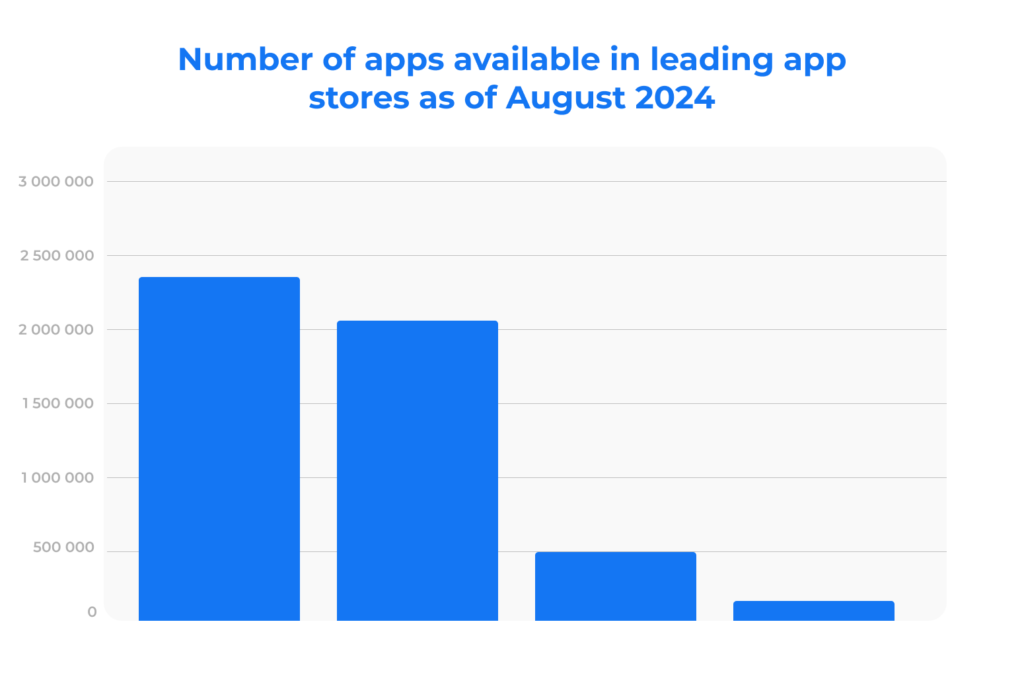
According to Statista, as of August 2024, Android users can choose from over 2.3 million apps, while Apple’s App Store offers approximately 1.64 million apps. With such intense competition, having a solid architecture gives you an edge in terms of performance and user satisfaction.
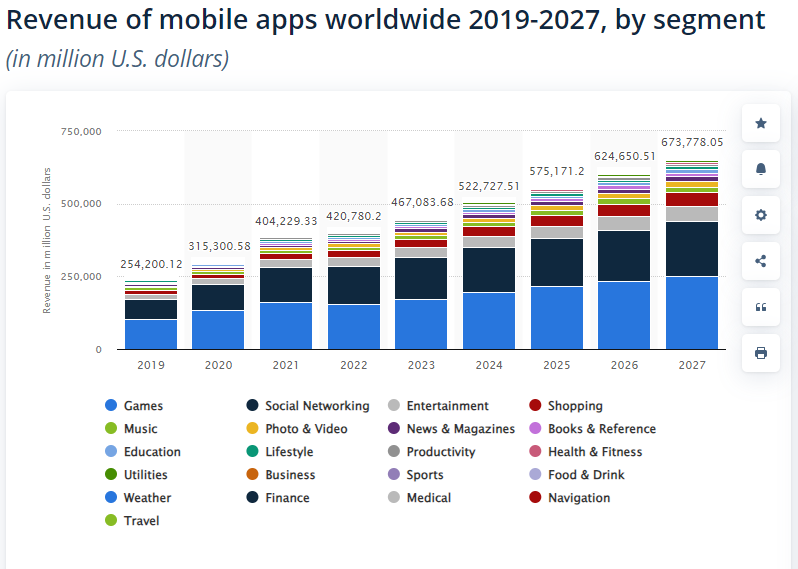
Importance of a Good Mobile App Architecture
A well-structured mobile app architecture is key to ensuring that every component of the app functions correctly. Poorly designed architecture can lead to numerous problems, such as:
- Increased development costs and time
- Difficulty in scaling
- Frequent bugs and errors
- Challenging testing and maintenance
Developers who prioritize a robust architecture see smoother app performance, easier updates, and better user experiences. This directly impacts the app’s long-term success, user retention, and profitability.
What is a Mobile App Architecture Diagram?
At its core, a mobile app architecture diagram represents the structure of the system, showing how various components and their interfaces interact. Good architecture is independent of external resources, which means it doesn’t rely heavily on frameworks, libraries, or operating systems. This independence ensures that your app functions smoothly, regardless of changes in external environments.
A good mobile app architecture also enhances:
- Scalability: Easy to expand as your user base grows
- Flexibility: Adaptable to changes in technology or requirements
- Testing: Simplifies testing processes and debugging
- Maintainability: Easier to maintain and update
Clean Architecture for Mobile Apps
One of the most popular approaches today is Clean Architecture, which organizes the app into layers, ensuring that each layer operates independently from the others. In this setup, the core logic of the app is contained within the inner layers, while the outer layers handle user interfaces and external data sources.
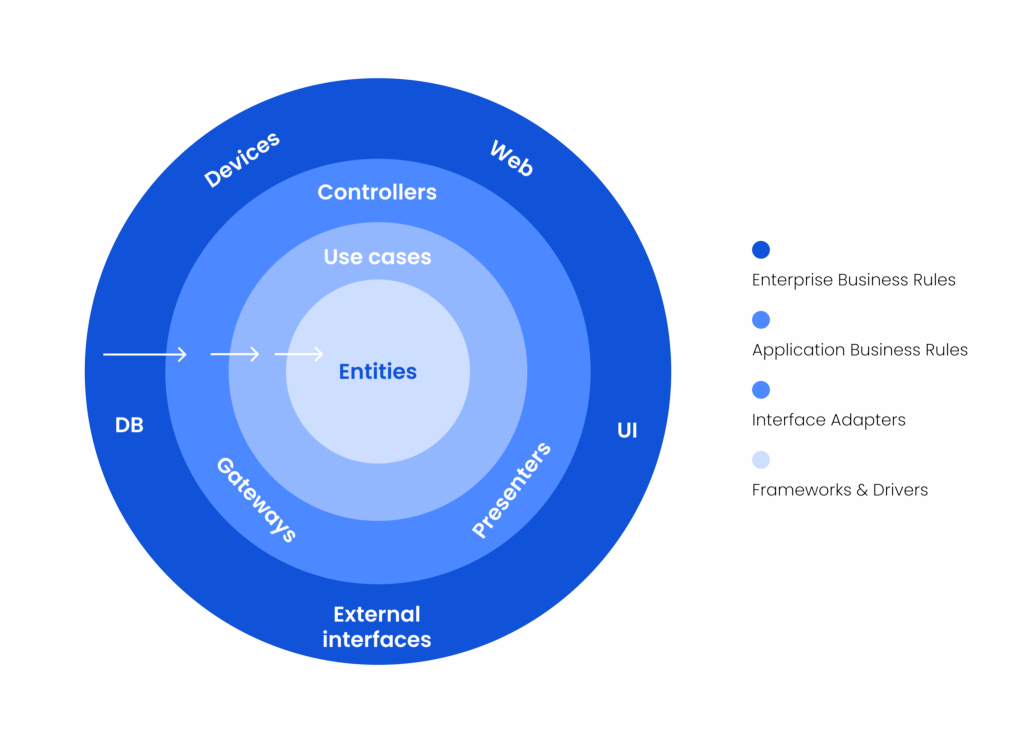
The key benefit of Clean Architecture is its adherence to the Dependency Rule, which states that nothing in the outer layer should directly influence the inner layer. This ensures a clear separation of concerns, making the app easier to manage, test, and maintain.
iOS Mobile App Architecture
iOS apps rely on a similar approach, but with a different layer structure:
- Core OS: Manages file systems and system security
- Core Services: Handles data management and interactions with databases
- Media Layer: Manages multimedia data like video and audio
- Cocoa Touch: Controls user interface elements and user interactions
An MVC (Massive View Controller) and its variants are often used to build high-quality iOS mobile app architecture. Cocoa MVC tends to promote a Massive View Controller since the controller is heavily integrated into the View’s lifecycle, making it hard to distinguish it as a separate component. While some of the business logic and data conversion can still be handled within the Model, there are limited options when it comes to managing tasks in the View.

Typically, the View’s primary role is to forward actions to the controller. Ultimately, the View Controller becomes both a delegate and data source, as well as the central hub for initiating and stopping server requests.
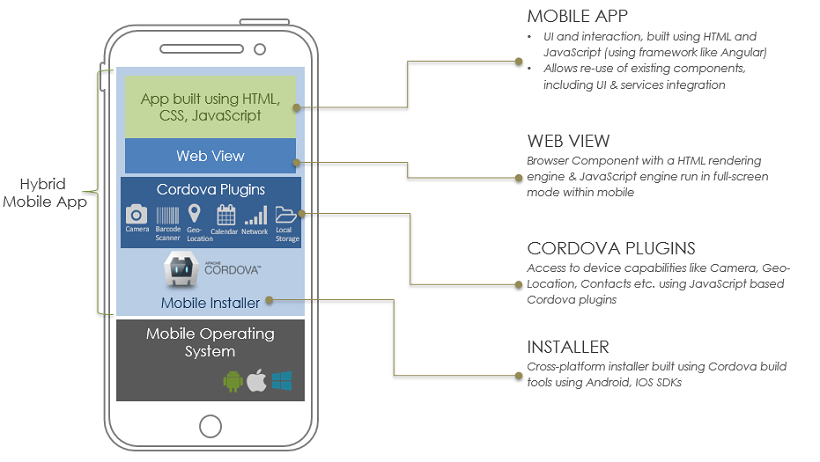
Hybrid Mobile App Architecture
Hybrid mobile apps combine native and web-based technologies to offer a faster and more flexible development process. However, they may not be the best option for apps requiring complex features or interactivity. Hybrid mobile app architecture allows for easy updates and leverages both native and web solutions, making it a popular choice for many developers.
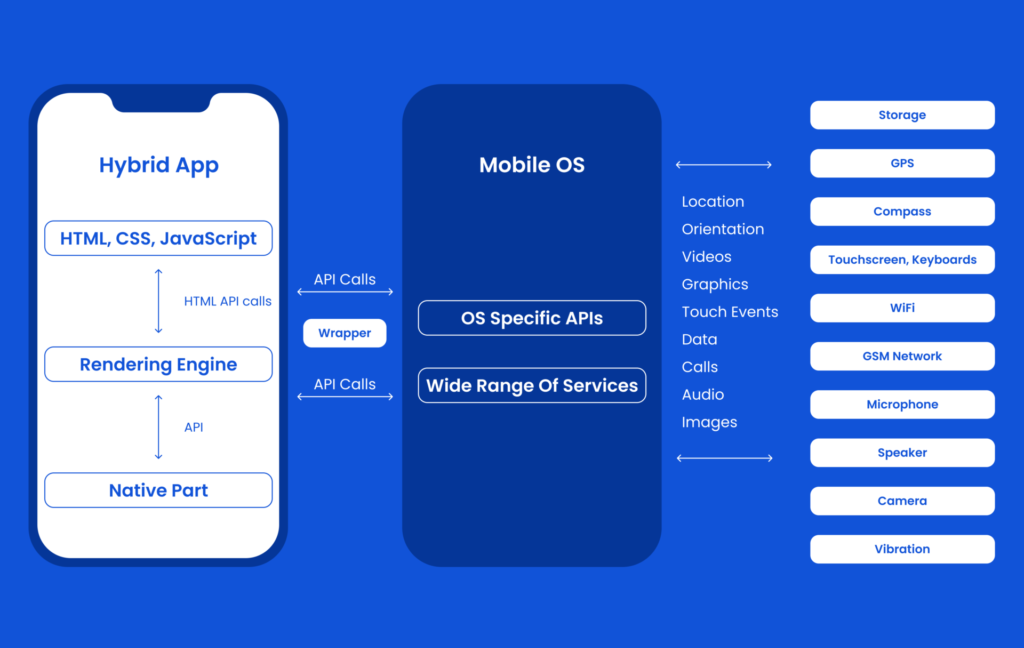
However, it’s important to note that hybrid apps are more suitable for simpler applications. For feature-rich apps, a native or cross-platform approach might be more appropriate.
Cross-Platform Mobile App Architecture
Cross-platform mobile app architecture offers a balance between hybrid and native app development by utilizing frameworks like React Native or Xamarin. These frameworks allow mobile app developers to write a single codebase that works across multiple platforms, such as iOS and Android.
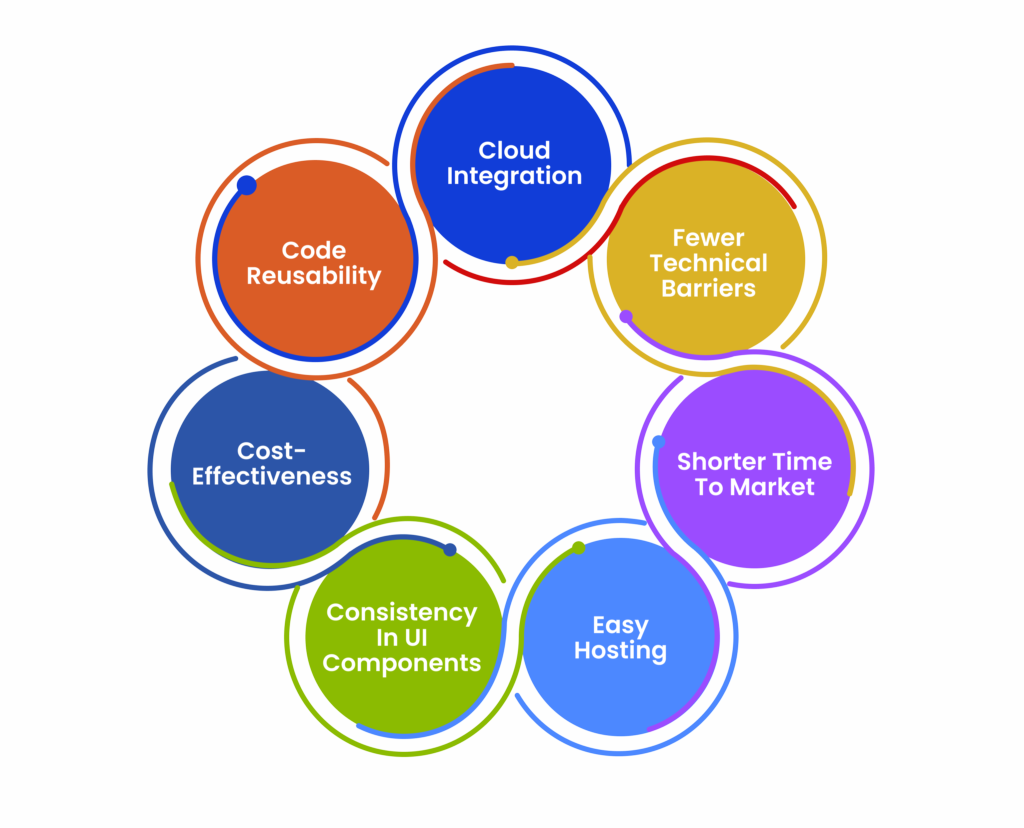
Cross-platform architecture offers several advantages:
- Faster development cycles
- Lower development costs
- Consistent user experience across platforms
- Easier maintenance
Unlike hybrid apps, cross-platform apps provide a more native feel, which improves the user experience.
Choosing the Right Mobile App Architecture for Your Business
Selecting the right mobile app architecture depends largely on your project’s scope, budget, and future plans for scalability. While smaller apps may function well with a hybrid or cross-platform architecture, larger applications often benefit from Clean Architecture due to its scalability and maintainability.
Key Takeaways
Building a successful mobile app requires careful consideration of its architecture. Choosing the right framework, ensuring the app’s independence from external resources, and following principles like the Dependency Rule and Dependency Inversion can lead to long-term success. The right mobile app architecture diagram not only makes development more efficient but also simplifies future updates, testing, and scaling.
In an increasingly competitive app market, investing in a solid mobile app architecture can be the difference between success and failure.

